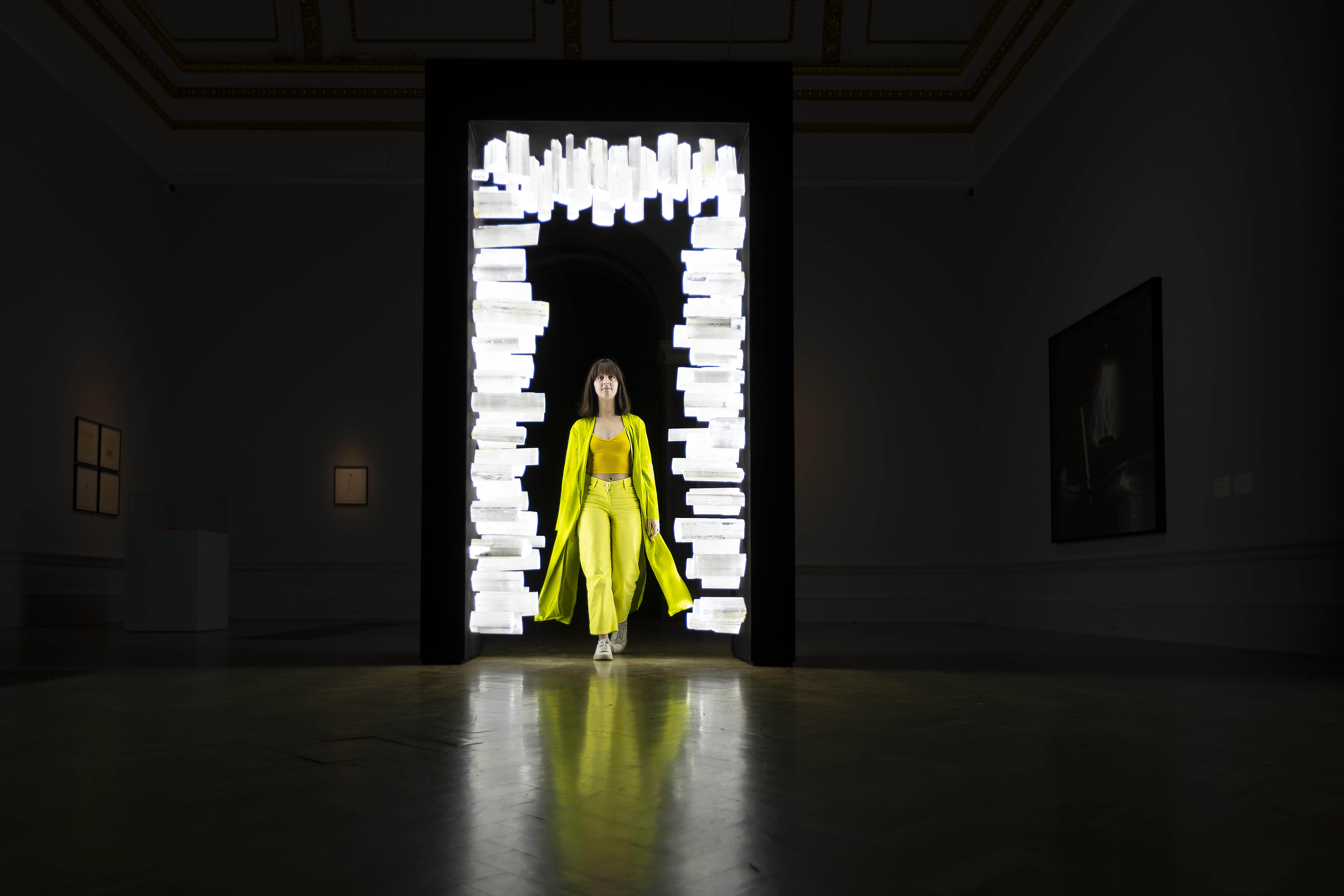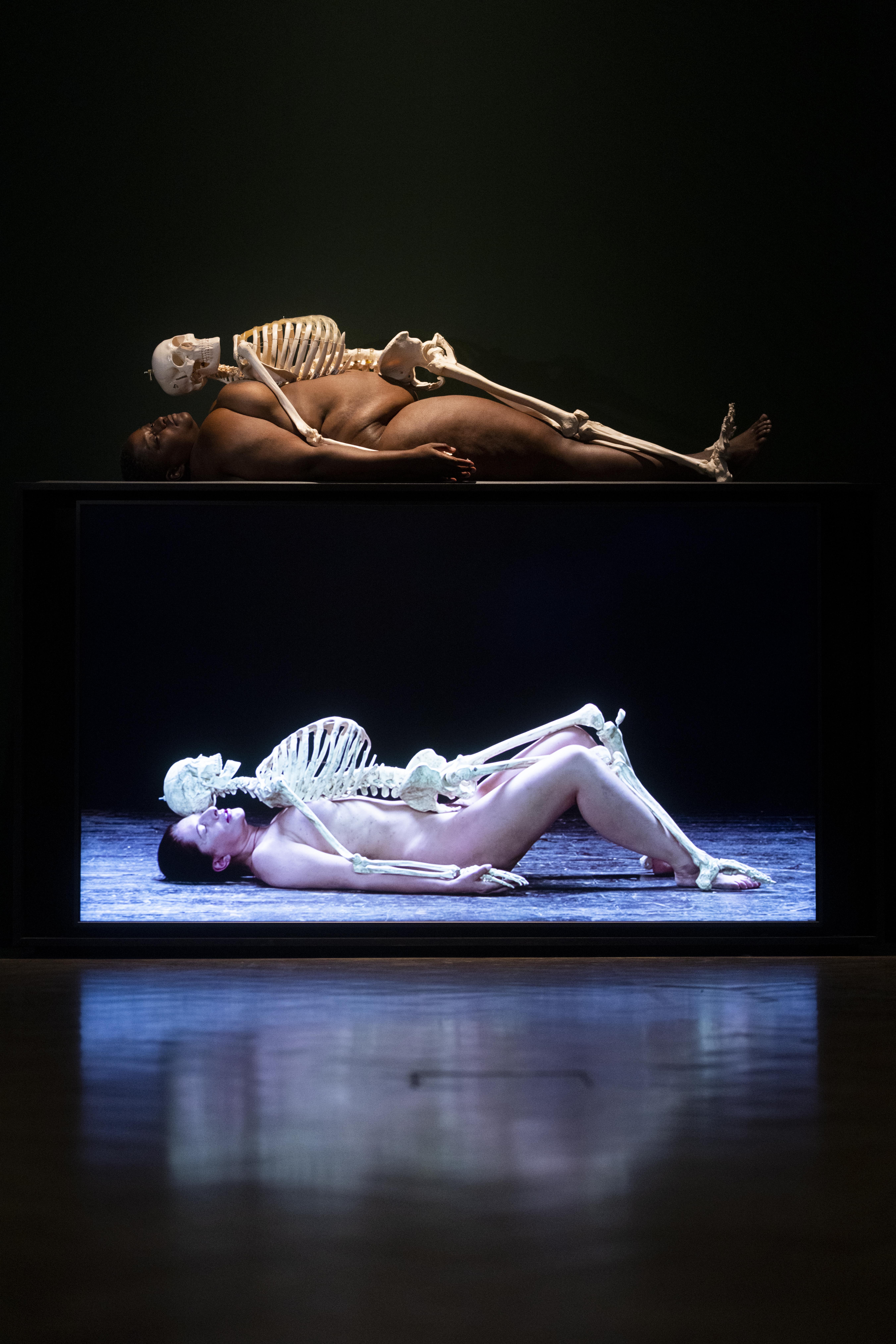It’s taken six years of planning, and is three years late, but finally, this epic Royal Academy show is opening. Originally slated for 2020, but postponed due to the pandemic — of all the Covid delays, cancellations and closures, one for a show where you literally rub up against naked humans is perhaps the most understandable — here it is. It’s been reimagined, lost its original title (After Life), gained a thematic rather than chronological structure. The 76 year-old Serbian performance artist Marina AbramoviÄ insists it is the best possible presentation of her work.
And, for once, this is not hype. I can’t imagine a better display, especially given that much of it exists as documentation of performances. The staging of this material on film and in photographs is exemplary, and it’s aided by four live pieces from different moments in AbramoviÄ’s career, reperformed by Marina-approved artists. I struggled to picture how the vast galleries of the RA could be filled by an artist whose practice has inevitably been largely ephemeral, when they have swallowed and diminished more conventional artists. But there is no sense of padding. The pacing is great: it’s spare where it needs to be, busy and noisy at the right moments.
But that doesn’t mean it’s perfect. Not by a long shot. Because after a tremendously prolific first 15 years or so, AbramoviÄ’s work grows increasingly uneven. It makes the thematic structure all the more apt, because you don’t have one of those terrible anticlimaxes that can make some retrospectives harrowing.
AbramoviÄ was born in Belgrade, then in Yugoslavia, in 1946, to partisan heroes of the Second World War and later Communist government linchpins. Her upbringing was strict; her mother particularly disciplinarian, her grandmother devoutly religious. It’s difficult not to read these factors as crucial in the asceticism, brutality and rigour of her work.

Rhythm 10 (1973) was her first performance: a systematic version of the game where one stabs a knife between one’s fingers, in which whenever she cut herself she then chose another knife – there were 20 in all. The film of the work is terrifying to watch, of course, but so much of this period is. In Rhythm 5 (1974), presented in the form of photographs, she set fire to a wooden five-pointed Communist star, cut her hair and threw it into the flames and then lay down inside the star, eventually losing consciousness and having to be rescued.
There’s a lot going on here, of course, but this is clearly a personal and political gesture as well as an artistic one: a desire to push the boundaries of her body to escape its physical (and perhaps familial) confines but also the societal strictures of an autocratic regime.
When she turned the spotlight onto that society, the results were extraordinary. In Rhythm 0 (1974), the last in that series, she stood motionless in a Naples gallery with a table of objects before her, with everything from a newspaper, a rose, bread and honey, to more knives, razor blades and a gun and bullet. The table has been reconstructed for the show. The instruction was simple: AbramoviÄ was an object, and the audience could use the items on the table to do whatever they desired. Astonishingly, even sickeningly, they lost control.
Photographs of the performance, projected around the room show a man tying a chain around her neck, blood pouring from a cut made by a blade near her collarbone, another man cutting her clothing and stripping her naked to the waist, and AbramoviÄ being forced to hold a loaded gun to her head. The projected images change frequently to give a sense of the chaos.
What happened in that room is almost unfathomable: the social contract appeared to break down because AbramoviÄ had created a situation in which the audience had consent to do as they saw fit. That the threatening objects are fixed to the table in its 2023 reconstruction tells you everything you need to know about the risk she took that night, and how unrepeatable it is today.

Most of the discomfort in the Academy emerges from documentary materials but one of the reperformed works places you into the heart of the physical and psychological buttons AbramoviÄ pushed. Imponderabilia (1977) is one of her works conceived with Ulay, her German collaborator and lover in the 1970s and 1980s. Its conceit is simple: the two artists, naked, form a narrow doorway, through which the audience has to pass. In this simple act, everyone – AbramoviÄ and Ulay, the performers who reconstruct the piece here, and whoever passes between them – is both vulnerable and imposing. You can circumvent it if you choose, but I tried it; and it was unspeakably awkward. You do everything you can to not touch the performers, but you know it’s impossible. So then the question becomes: how can you touch as innocently as possible? Close to 50 years after it was first performed, it remains a brilliant conceit, perhaps even more potent than then, given the current fraught debates around bodily freedom, identity and permission.
The reperformance is the parting shot in a magnificent room dedicated to Ulay and AmbramoviÄ’s collaborations — reflecting a breathtaking (literally, in the case of one work where they lock mouths to the point of unconsciousness) level of intensity and symbiosis, precision and tension. They are joined by their mutually long hair for 17 hours, they scream at each other to the point of hoarseness, they repeatedly slap each other. Perhaps most unsettlingly, in Rest Energy (1980), they lean back on their heels facing each other, with AbramoviÄ holding a bow and Ulay pulling it back with an arrow pointing at her heart. I don’t think I’ve seen a better display of historic performances.
But when you pass through those naked bodies you find out what happens after their relationship begins to fall apart. It is also the threshold beyond which the show gets inconsistent. AbramoviÄ and Ulay had the idea to get married after three months walking from opposite ends of the Great Wall of China. But thanks to delays, when they finally did it, in 1988, it marked the end of their relationship.
With Ulay, AbramoviÄ already began to focus on nature and ancient spirituality, inspired by visits to First Nations people in Australia and other cultures. But rather than using these experiences powerfully, much of her spiritual quest dissolves into cliche – crystals, stones and metal as conveyors of ancient energies. There are a LOT of crystals in the second half of the show. So if you buy this woowoo stuff, you will have a whale of a time. If, like me, you find it to be nebulous tosh, then it becomes wearing, however beautifully it’s displayed.

That’s not to say that AbramoviÄ’s later work is devoid of merit – Balkan Baroque (1997), her response to the war in the former Yugoslavia, is among the most powerful things here, displayed in a blood-red room. Another work that is reperformed, Luminosity (1997), in which a female performer sits naked on a bicycle seat in a permanent reincarnation of the Leonardo sketch of Vitruvian Man, is a marvellous study in anatomy and bodily fortitude, where pure energy is evoked without the need of crystals.
Something else happens that makes the later work more problematic: AbramoviÄ becomes famous; hugely so. So that where her earlier works focus on issues relating to women, to the body politic, to resistance, consent, control and chaos, now they are at least in part infused with the aura of Marina and somehow less dynamic for it.
The show opens with video documentation of The Artist is Present (2010), where she occupied the lobby of the Museum of Modern Art in New York and sat opposite a procession of visitors to the museum for eight hours a day for three months. We see some of them in a grid of video screens on one wall, opposite another grid that features Marina, returning their gaze.
There is no doubt that she showed remarkable strength to complete the work. But witnessing this documentation of the event left no impression on me of the great crucible of humanity its champions describe; more, the feeling of a cult.
I suspect that most of the droves of people that this often superb show will undoubtedly attract will disagree.







